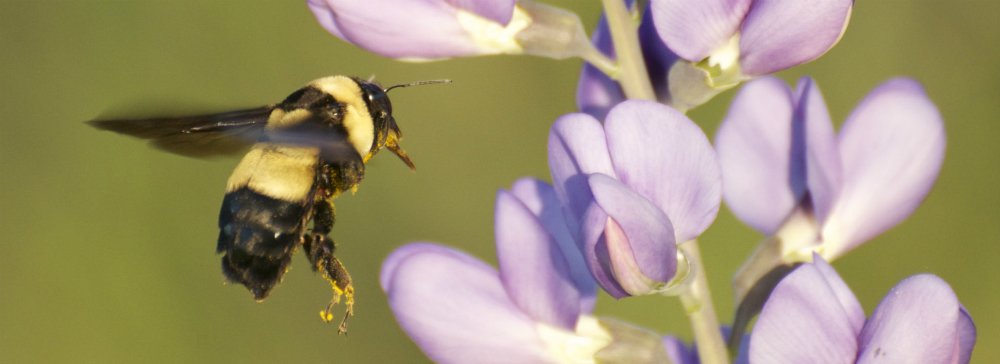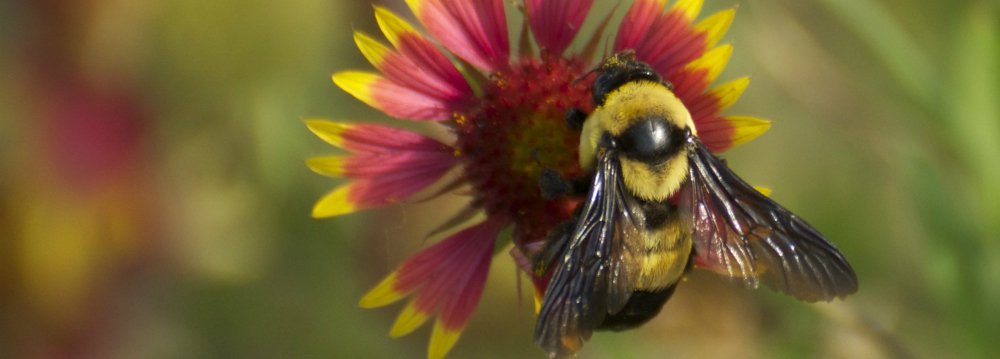Bumble Bee Conservation
Of the thousands of bees native to North America, bumble bees are among the most recognizable and best known. Bumble bees are considered particularly effective native pollinators given their generalist floral preferences, large body size, cold tolerance, and ability to buzz pollinate. Several hundred native flowering plant species are visited and pollinated by bumble bees, an act that serves to maintain the ecological integrity of natural communities. Bumble bees also also make substantial contributions to agriculture and have proven to be highly effective pollinators of economically important crops including blueberries, cucumbers, peppers, pumpkins, tomatoes, and watermelons.
Conservation Concern
Bumble bee decline, in the form of extinctions and regional extirpations, is a phenomenon that has been well-documented in the United Kingdom and several other European nations. Evidence of a similar conservation dilemma in North America was largely anecdotal until 2008-2009 when declines were first quantified for bumble bee species in Illinois and Ontario, Canada. Support for the proposition that population declines have occurred for a subset of this continent's bumble bee fauna has since been provided by more geographically extensive assessments of species persistence across North America.

Southern plains bumble bee. Courtesy of Jessica Womack.
Researchers from the University of Illinois at Urbana-Champaign assessed eight species across their historical distributions in the United States and identified range contractions of up to 87% for four of these bumble bees (Patterns of widespread decline in North American bumble bees). A recently published analysis of historical specimen data for 21 eastern North American bumble bee species found that 11 of the examined species have experienced populations declines of 50% or greater (Assessing declines of North American bumble bees (Bombus spp.) using museum specimens). Based on International Union for Conservation of Nature Red List criteria, those authors ranked eight of the 11 declining bumble bee species as critically endangered to endangered and in need of habitat protection efforts.
Factors contributing to bumblebee decline on this continent have not been well-defined, but potentially include introduced pathogens as well as loss and degradation of suitable open, flower-rich habitats. Given declines in managed European honey bee colonies, loss of native, generalist pollinators such as bumble bees could have significant ramifications for North American agriculture. Reductions in native pollinators could also have deleterious impacts on native plant reproduction and terrestrial ecosystem maintenance.

Southern plains bumble bee. Courtesy of Jessica Womack.
Given their economic and ecological values, assessments are needed to gain a better understanding of the conservation status of bumble bee's in Texas. The state's bumble bee fauna had largely gone unstudied for over 100 hundred years until field and citizen-science surveys were initiated by TPWD's Nongame and Rare Species Program (Bumble bees (Hymenoptera: Apidae) of Texas: historical distributions). This work has grown to include partnerships with researchers at the University of North Texas and University of Texas at Austin.
Documented observations of bumble bees in Texas are needed to assess where species occur and if they are persisting across the landscape. If you are interested in submitting observations of bumble bees, and other bee species, join the Nongame and Rare Species Program's citizen-science initiative, Bees and Wasps of Texas